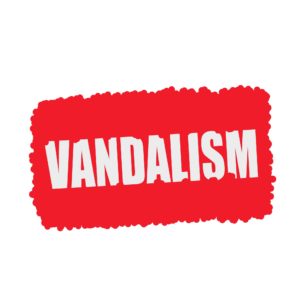
Vandalism is often seen as a juvenile crime, but that doesn’t mean it’s always a minor issue. Vandalism can be something as petty as spray painting your initials on a tree, or as severe as causing thousands of dollars in damage. Homeowners use their home security brisbane system to catch anybody who vandalizes their property. Because not all instances of vandalism are the same, Minnesota prosecutes these crimes in three different degrees. Today, we take a closer look at the definition and penalties for all three degrees of vandalism in Minnesota.
Vandalism in Minnesota
Vandalism in Minnesota is actually classified under the broader category of criminal damage to property. It’s important to remember that the law on vandalism changes for different states, so if you are from somewhere like California then you should get a Los Angeles criminal defense lawyer to help you with your charges, rather than a Minnesota one as they will be able to help you more. Anyway, there are three degrees of criminal damage to property in Minnesota.
First Degree Criminal Damage to Property
First degree criminal damage to property is the most severe type of vandalism. A person can face charges of first degree criminal damage to property if they intentionally cause damage to someone’s else’s property without their permission, and when any of the following conditions are present:
- The damage involves a reasonable risk of bodily harm.
- The property belongs to a common carrier (a utility company) and the damage causes impairment to the public’s access to those services.
- The damage reduces the property’s value by more than $1,000.
- The damage reduces the property’s value by more than $500 and the offender has a prior conviction for criminal damage to property.
First degree criminal damage to property is a felony-level offense which carries potential sentences of up to five years in prison and up to $10,000 in fines. There may also be monetary penalties for paying back the property owner for the damage caused.
Second Degree Criminal Damage to Property
A second degree criminal damage to property charge involves intentionally causing damage to someone else’s property because of their race, ethnicity, religion, sex, sexual orientation, disability or national origin.
If you are facing a charge of second degree vandalism, you could face potential penalties of up to one year in prison and fines up to $3,000.
Third Degree Criminal Damage to Property
Third degree criminal damage to property is typically the most common level we see. As the law reads,
“Whoever intentionally causes damage to another person’s physical property without the other person’s consent” is guilty of third degree criminal damage to property.
The law also states that a person “may be sentenced to imprisonment for not more than one year or to payment of a fine of not more than $3,000, or both, if the damage reduces the value of the property by more than $500 but not more than $1,000 as measured by the cost of repair and replacement.”
There is also technically a fourth degree criminal damage to property charge that accounts for “any other circumstances,” but the vast majority are treated as a third degree crime.
As you can see, all these varying degrees carry the prospect of significant jail time and fines, so if you find yourself being charged, contact a criminal defense attorney right away.





